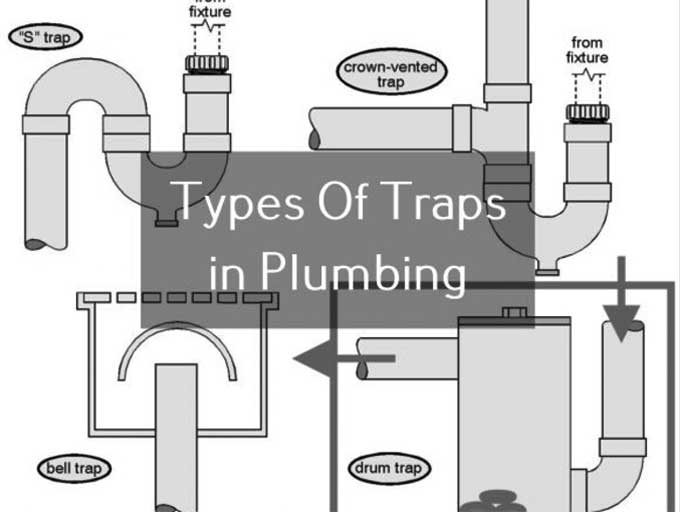
The Under Appreciation of Traps & its Types in the Construction Industry
Traps are used to trap sewer and water gases. Traps protect your home from bad odors, bacteria, and insects. The wastewater from any water-using appliance or fitting must pass through a drain line, and the pipe must also have a trap in it to prevent it from overflowing. Sealing the building will prevent sewer gasses from entering, keeping the environment fresh.
The traps contain enough water to keep gasses from entering the house since the water acts as a seal. Traps usually found within plumbing fixtures are connected to several connections and are installed with these.
Various Traps in Plumbing
1. Gully Trap
Before the external sewerage line connects to the building, there is a gully trap at the buildings exterior. It not only collects wastewater from the kitchen sink, washbasins, bath, and washes area, but it also serves as a drain.
2. Intercepting Trap
Interceptor Manholes have intercepting traps. The building sewer interception is provided with this. The sewer traps are equipped with water seals so that gas from public sewers does not enter the building sewers. The sewer lines are 100 mm deep and located at the last opening in the building's sewage system. Traps on these lines have a water-tight seal.
3. Floor Trap
This trap collects water from sinks, showers, bathrooms, and washbasins. The top grating can remove and cast iron or UPVC material is available. A water seal should install at least 50mm, 75mm, and 110mm deep.
4. P Trap
Water closets in India use this trap. The trap usually casts iron or UPVC. The trap protects the house from foul gas entering due to its water seal.
5. S Trap
Traps like this one generally use in toilets to fix water closets. A P trap and an S-trap are identical except that the P trap has an outlet through a wall while the S-trap has an outlet through a floor.
6. Q Trap
Traps like this uses in toilets with underwater closets. It works in the upper story, not on the ground floor like the S trap.
7. Bottle Trap
This type of trap has a horizontal waste pipe, and to clean it, you must unscrew the bottom. Generally used at bathroom basins or pedestal sinks to catch foul gasses, bottle traps are ideal for installations in small spaces.
8. Running Trap
A public toilet might use this type of trap to facilitate a group of un-trapped washbasins. If a P or S trap is not possible on a domestic installation, this product could use.
It is necessary to use special traps for dishwashers and washing machines that have running traps for the waste outlets.
9. Building Trap
Backpressure and trap siphon age could cause sewer gas odors to be unbearable. In heavily populated, wet, and dry areas especially, health officials were aware of this potential health threat.
As a result, each building should have a building trap to combat the issues above it. In addition to deterring vermin, the trap provided additional protection against sewer gas. S-traps were typically large in diameter.
10. Grease Trap
It is easier to clean these traps from the surface, and they are ideal for food processing units since they are capable of collecting grease content. Grease and solids that enter the wastewater drain are intercepted effectively by design.
Fats and oils accumulate in these traps, which are located in commercial cooking facilities because they prevent fats from entering the sewer.
Workflow of Trap in Plumbing
Plumbing fixtures are equipped with trap prevent sewer odors from entering the home. The wastewater seals these traps. The water that forms a seal around the trap flushes out every time you use a fixture.
It takes a lot of engineering to build a trap. Their design prevents debris from collecting while retaining water to form a seal. The effectiveness of a trap depends on its velocity.
Whenever the water flows too fast, it will siphon down the drain. The trap's bottom is more likely to collect solids if it is too slow.
To get more details, watch the following video tutorial.
Video Source: Engineer's Coach
Wrapping it Up
The purpose of traps in a home plumbing system is to locate and remove objects easier from the plumbing system since their wide openings allow you to retrieve or remove objects easily. You can also insert plumbing into their large caps to unclog your drains easily. A drainpipe flow enters a trap & then leads to the top of the trap, where solid objects are left behind. As long as there is water in the trap, if sewer gases escape, they remain in it.


